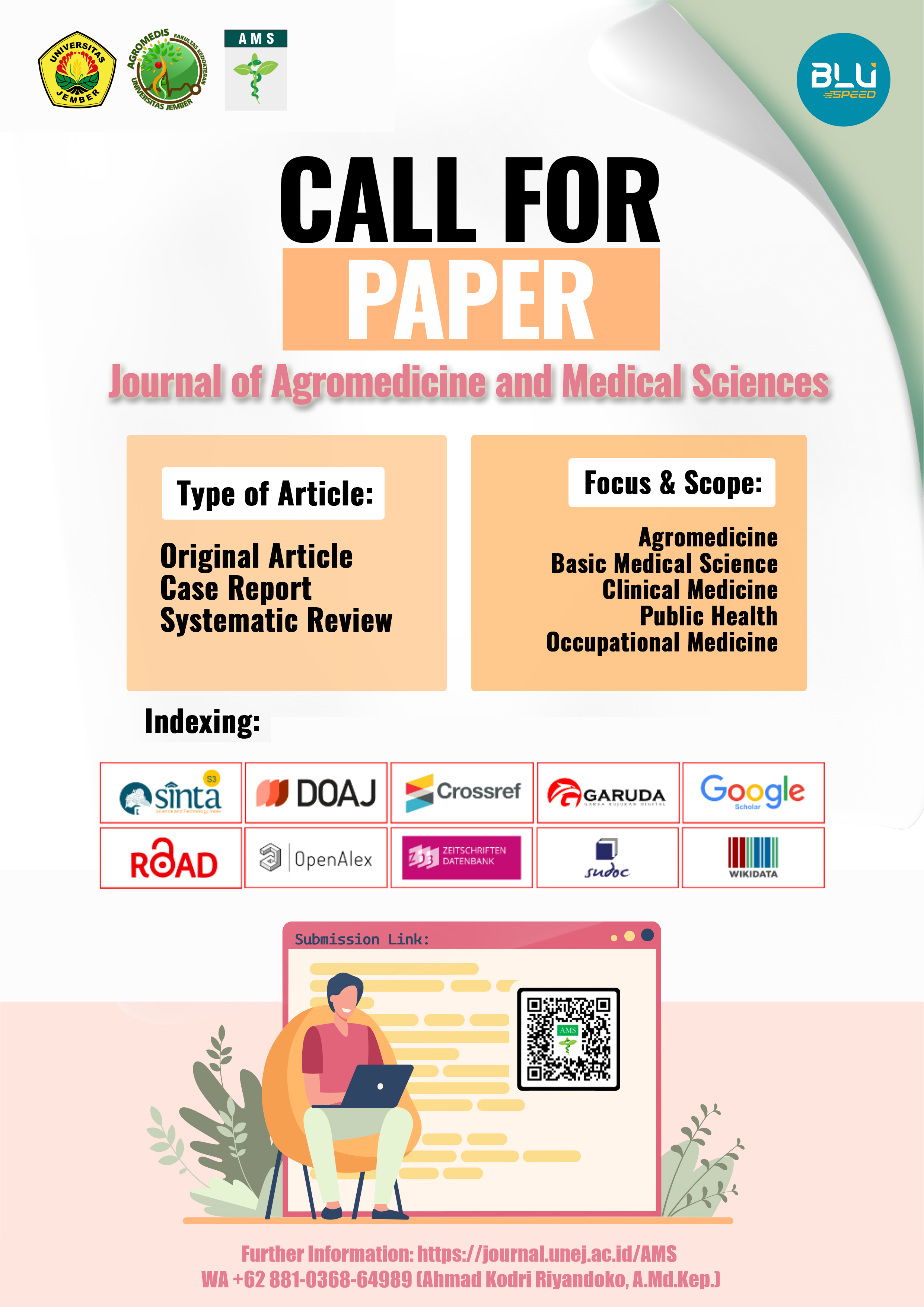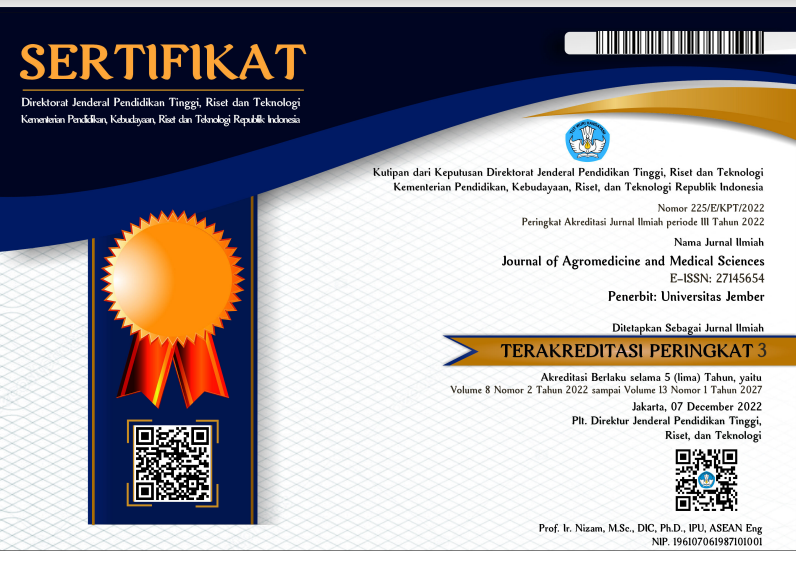The Relationship of Work and The Symptom of Carpal Tunnel Syndrome (CTS) in Rujak Sellers in Glenmore District Banyuwangi Regency
DOI:
https://doi.org/10.19184/ams.v10i3.4761Keywords:
Carpal Tunnel Syndrome, CTS Symptoms, Duration of Work, Frequency of WorkAbstract
Carpal Tunnel Syndrome (CTS) is a neuromuscular disease characterized by tingling, pain and sensory disturbances in the palms and fingers due to compression of the median nerve which is in the carpal tunnel. One of the risk factors for CTS is that repetaed wrist flexion-extension movements over a long period of time can trigger mechanical trauma or ischemia to the median nerve. Rujak (Indonesian traditional salad) seller is one of the jobs that is at risk of experiencing CTS. This research was conducted to determine the relationship between duration and frequency of work and symptoms and severity of CTS in rujak sellers in Glenmore District, Banyuwangi Regency. This cross-sectional analytical observational study was conducted from April to June 2024 and involved 59 respondents. Data was collected through interviews using questionnaires on work duration, work frequency, CTS symptoms and the Indonesian version of the Boston Carpal Tunnel Syndrome Questionnaire (BCTQ). The results of the Spearman analysis show a significant relationship between work duration and CTS symptoms (p=0.005) with a moderate correlation coefficient of 0.361. The results of data analysis also show a significant relationship between work frequency and CTS symptoms (p=0.000) with a strong correlation coefficient of 0.595. This research concluded that the duration and frequency of work had a significant positive relationship with the symptoms and severity of CTS. The longer the duration of work and the more frequent the frequency of work, it can increase the risk of CTS and increase the severity of CTS.





















